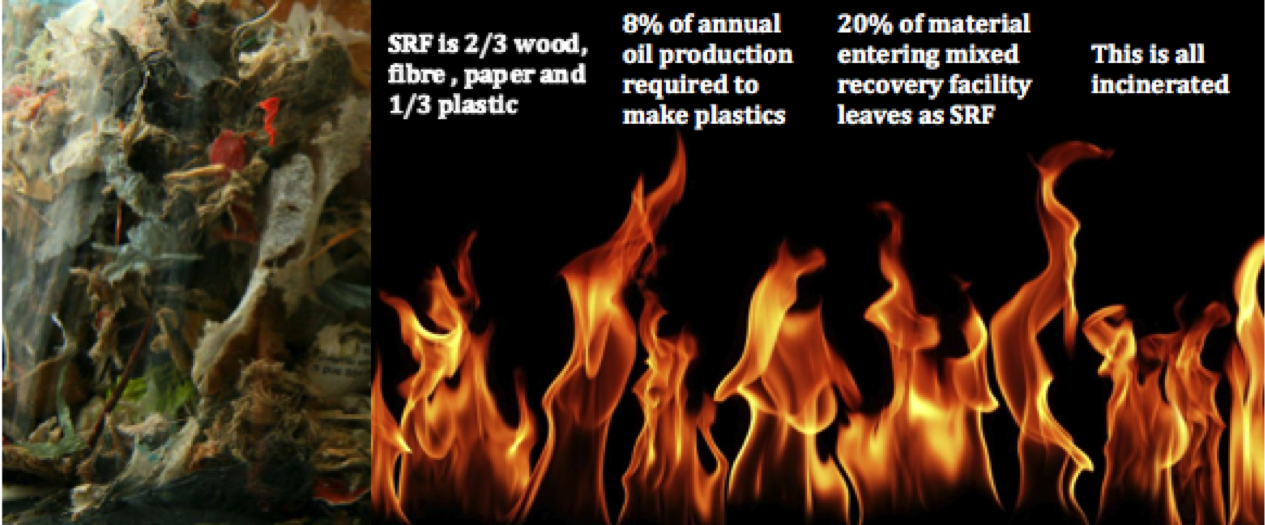Team:Imperial College/Bioplastics
From 2013.igem.org
Producing and Recycling Bioplastics
We are producing the bioplastic poly-3-hydroxybutyrate(PHB) using the organic material in the waste product, solid recovered fuel. We have also devised the first method for recycling PHB and are working with Yale to do the same for PLA. Here you will find out why.
Bioplastics have a bright future
Bioplastics are made either directly by living things or from the products they make. They are usually more environmentally friendly than petrochemically derived plastics(1) and do not rely upon finite fossil fuels. Advances in how they are produced is allowing bioplastics with controllable physical properties to be produced(3) which enables uses which mimic those of oil-based plastics. The properties of some bioplastics allow novel functions to be carried out; an exciting example of this is the production of biocompatible scaffolds which can be used in surgical treatments(4). This combination of innovations leading to improved functions and the development of novel uses combined with environmental benefits over petrochemical plastics are just some of the reasons why bioplastics are expected to flourish commercially in the coming years(5). Currently around 10% of the plastics market consists of bioplastics, with this predicted to increase to around 30% by 2020. This is a huge increase and represents significant commercial opportunities. The predicted production of such a large amount of material requires careful consideration of what we do once we have used the products produced, called end of life solutions.
Poly-3-Hydroxybutyrate and Polylactic Acid are two of the best developed bioplastics
Poly-3-hydroxybutyrate(P3HB) and Polylactic Acid(PLA) are both commonly used and well studied bioplastics. Currently several different companies produce each by a variety of methods(9).
Poly-3-Hydroxybutyrate
P3HB is produced as an energy store in some bacteria. Commercially it is produced in bioreactors from sucrose and other sugars derived from plant biomass. P3HB can also be produced in the stems of plants, however this requires large inputs of fertiliser and large areas of land. Interest in the production from the fermentation of organic waste materials is also increasing. P3HBs are being investigated for uses in many things from food packaging to discount cards to replacements for current plastics made from polymer blends.
Polylactic acid
Polylactic acid production is usually a chemical process, building up the monomers of lactic acid or lactide. It can also be produced by certain organisms. Biological systems of PLA production are also possible. This is what our collaborators at Yale are working on. PLA already sees use in the packaging industry and plastic bottles. Future uses as with many ‘biodegradable’ plastics will expand to include tasks where increased durability are needed(8).
Can’t we just let these plastics biodegrade?
You may have heard that P3HB and PLA are biodegradable. The biodegradable label disguises a subtlety which has important consequences. P3HB and PLA are actually industrially fermentable. This means special conditions are required for optimal degradation. One prominent P3HB producer even states during a promotional video that P(3HB) will not biodegrade in conventional landfills and counter to many claims will not easily degrade in your compost heap. PLA can be degraded in a compost heap, however the time it takes varies considerably depending upon the weather, temperature etc. Allowing these plastics to biodegrade is also a waste of the valuable resources used to create them. Biodegradation, although theoretically a green option due to the renewable source of the feedstocks, ignores the large amounts of energy, fertiliser and water that went into their original production. Biodegrading the final product after use means that it must be produced again from scratch. The loss of resources represented by biodegradation and the special conditions required make this the wrong end of life choice for P3HB and PLA.
What other methods for recycling P3HB and PLA are there?
Currently we are are not aware of any technologies available for the recycling of P3HB, that makes this this first.
PLA can be recycled by chemical means, reducing it into the monomer and then re-polymerising it again. However, innovation in recycling methods which tackle some of the key issues facing PLA will be key to its successful increased use. One benefit is the ability to recycle material contaminated with food waste. Currently plastics with more than 10% food waste contamination must be incinerated or landfilled. With biological recycling this would become an asset, helping to feed the bacteria.
References
- This is some reference
- This is something else
- This is something else
- This is something else
- This is something else
- This is something else
- This is something else
 "
"




